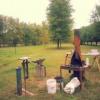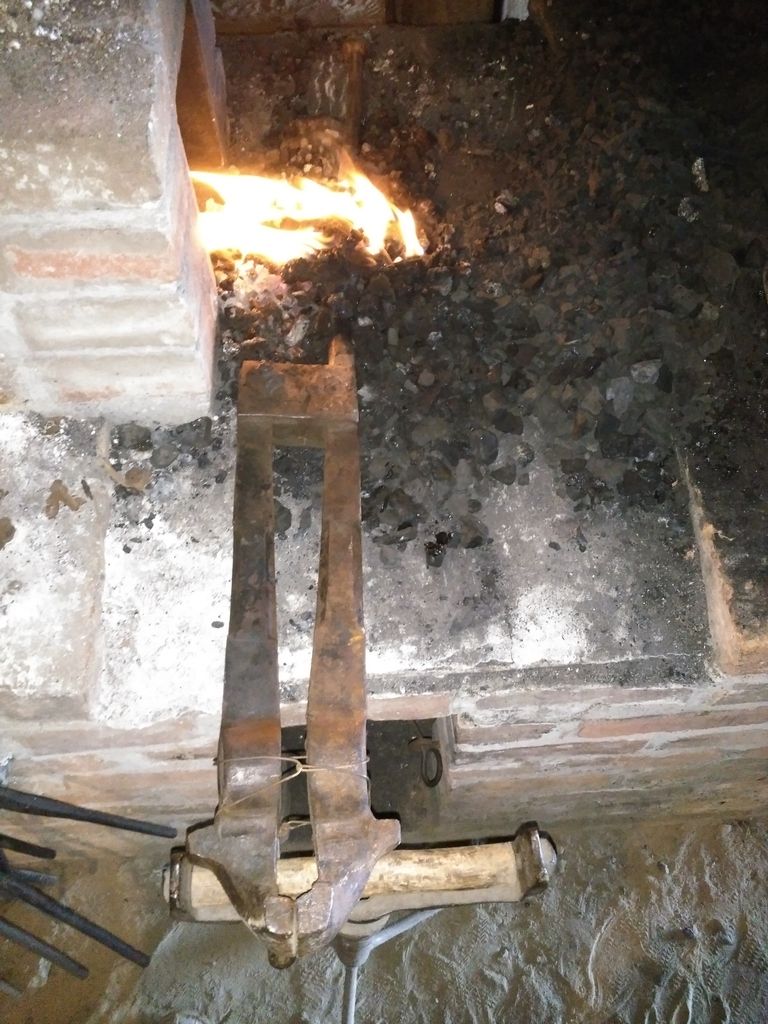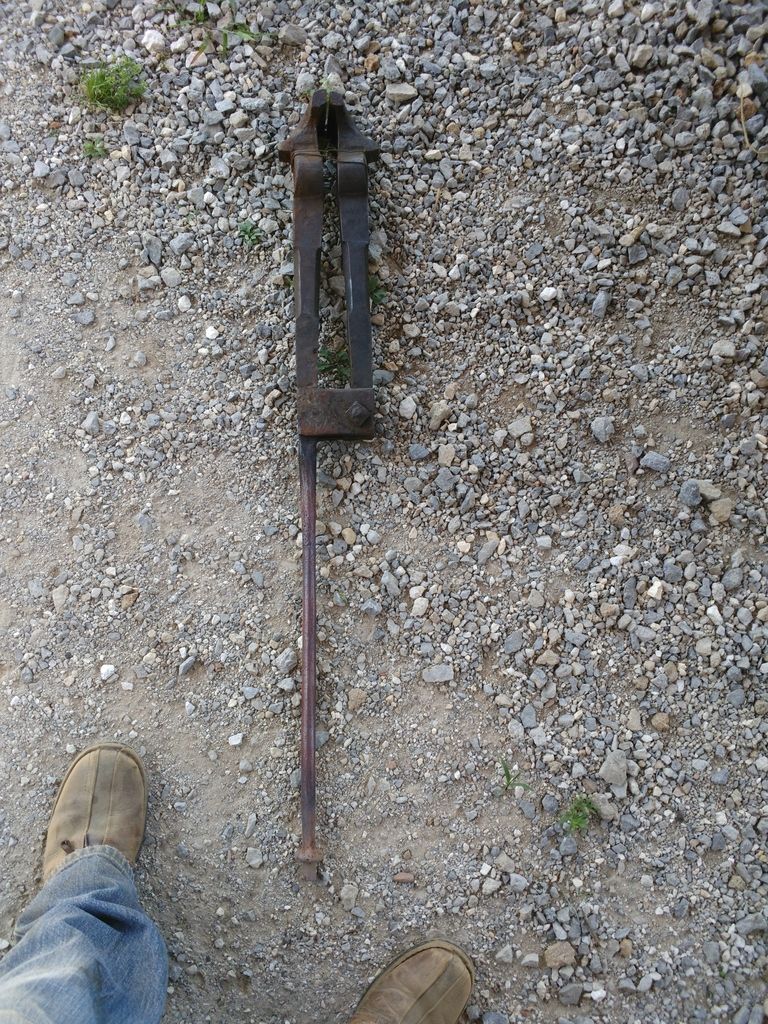-
Posts
122 -
Joined
-
Last visited
Content Type
Profiles
Forums
Articles
Gallery
Downloads
Events
Posts posted by Daniel S
-
-
They look like the log tongs on this page. They could be an early version. http://ext.nrs.wsu.edu/handtools/tools/movinglogs/

-
There is a satellite group of the Indiana Blacksmithing Association starting up at the Parke County fair grounds. If you're on facebook, they have a page and can be seen at http://indianablacksmithing.org/ . If you need coal, http://www.graberfarmandhomecenter.com/ . This is where a lot of people get it.
-
I don't know why it would have been made that way, but there was an anvil that was similar on the South Bend Indiana craigslist for a long time a few years ago.
-
Lol. It was bent in all directions. I wish I had been able to take pics of the straightening , but I was by myself. I was only trying to show people that they didn't have to find perfect tools to still make them work. It was the worst I had at home.
-
I picked up a small vise at Quad State a couple of years ago. I finally got around to straightening it. Having a vise already mounted really helped with tweaking it, but I did most I've the straightening on the anvil. It took a little bit to get it hot, but was an easy fix. Don't let a bent leg scare you away from a vise, try to use it as a bargaining point.
-
If it's going to get wet, don't use red oak. I'm sure that maple would work as well as anything.
-
Did you make it by to pick up some coal?
-
Did you end up getting the anvil?
-
If you go on Saturday, they close at or before 11am. You can buy at the bulk price if you take buckets or barrels. Like Dave said, calling ahead is a good idea. Not everybody that works there will know about the coal.
-
I meant my response in a joking manner too, I'm just not very good at the internet and forgot the emoticon.
-
Good luck!
-
why? Will he need a shorter hammer?

I hadn't thought about any equipment differences... I was mentioning because some of the positions I've seen people working in can require lots of hip flexibility. Also, changing posture can make doing everything a learning experience.
-
That sounds like a really fun time. You should find out if he works sitting or standing before you go. Definitely post pictures.
-
You can use a ball bearing of pretty much any size or a hammer. There are videos on YouTube of how to do it. The worst rebounding anvil I have is around 70% while the best is around 90%. For the price they seem to bring in your area, this sounds like a steal. There are probably cheaper anvils around, but this one is less than the going rate and sitting right in front of you.
-
Very nicely done. I bet she loves it.
-
I was asking about the Fisher chainmaker's anvil.
-
Are you going to post pictures of the chainmaker's anvil? I would like to see it, if you do.
-
Excellent looking table, great work.
-
Very nice tools. If you haven't seen it, this is a good video.
-
If you're not already a member, here is an ABANA affiliate not too far away. http://www.northeastblacksmiths.org/#list . I know someone who hadn't found an anvil in over a year, but found one in a few hours posting a want ad on the state associations facebook page.
-
I hate to say it but the video doesn't make it look promising. I would find a ball bearing and drop it from 10 inches to give it a real test. Since you have it you can still use it, it just may not be what you were looking for. What is your location?
-
Since I'm not a musician, I've never given any thought to making an instrument. A guy that I know has an mbira that has forged keys. He said that his marimba teacher had made it before he moved to the US. It looks very easy to make, but without knowing how it should be tuned I would be lost.
-
When I was studying chemistry in college, the favorite phrase was "A month in the lab can save you an hour in the library". I'm still guilty of falling into the trap, but I definitely try not to. Another phrase along the same line was, "There's nothing new in chemistry", meaning you haven't searched hard enough for the answer. In my working life it gets frustrating when people try and fail and assume something will never work without ever having started in the right place. It is some people's nature to have low activation energy starting projects and then burn it all out without getting a satisfactory result. Luckily there are people here to answer questions when they get asked. It probably saves a lot of 911 calls for experiments gone wrong.
-
As far as determining what is aesthetically pleasing, you can learn by studying. The book "By Hand and Eye" by Jim Tolpin and George Walker is very good. You can get it from Lost Art Press. They relate the way an object's proportions can be related to one another to make the end product attractive. I have a couple of other books on design, but this one has some interesting exercises that help to develop a good sense of what works and is pleasing to the eye.
I'm not an artistic person, but I enjoy blacksmblacksmithing and woodworking. As others have said art is a big concept, but I think starting small and studying the parts of the craft that interest you will help you develop the eye over time.





SOFA 2015
in Events, Hammer ins, Where to meet
Posted
I believe it had a gas engine. The hand grips were tongs.